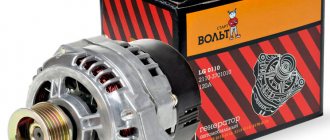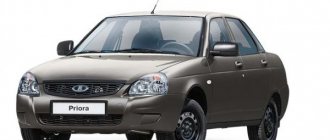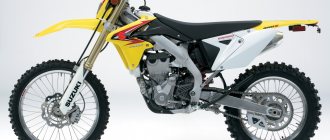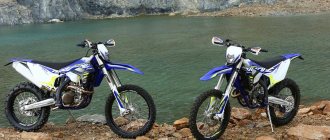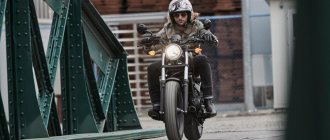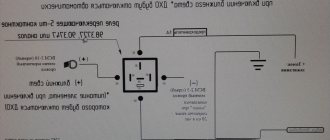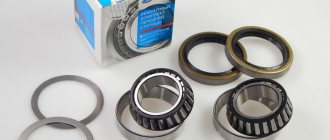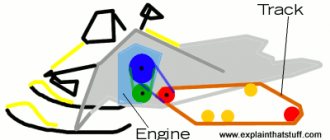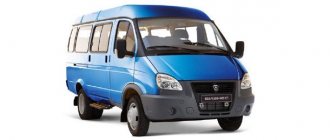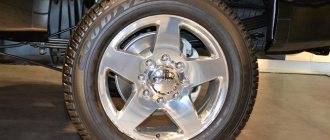⚠ A TTENTION ⚠
One day, while digging on the Internet, I came across a topic that interested me, namely, daytime running lights (DRL) combined with a turn signal (Turning Light) in one lamp and installed instead of the standard incandescent turn signal lamp in the front of the car. I liked this topic and started looking for an analogue of this product on Aliexpress. And I found it there, at a very reasonable price of 805 rubles for a set of DRLs and turn signals, the seller is normal, has been working for a long time, there are a lot of orders, the reviews are positive, in short, you can safely order from him.
The lamps, in a set of two, are installed in the headlight instead of the standard turn signal lamps. Connect to the standard turn signal lamp connector. The lamps contain LEDs in two colors, white and orange. The lamps already contain an additional load in the form of a resistance block, which eliminates the problem of rapid blinking and turn signals when using a conventional LED lamp without a load. The turn signal mode of these lamps is carried out in the standard way through the standard connector and there is no need to change anything. And the DRL mode is carried out by supplying power from any source (for example, dimensions or another where “+” appears after turning on the ignition) through an additional connector. While temporarily connected to the dimensions, the Plans are to connect to “+” after turning on the ignition, through a five-pin relay, so that when the low beam is turned on, the DRLs turn off!
Here's the scheme:
Installation of the DRL went without problems, it took about 1 hour.
As a result, we have the following: when you turn on the headlights, the lamps turn on in DRL mode and shine in a cool white color; when you turn on the turn signal, the lamps automatically switch to the “turn signal” mode, while the white LEDs turn off and the orange ones turn on, i.e. The lamp stops shining white and starts blinking orange as expected. After you turn off the turn signals, the lamp lights up with a delay of 2 seconds. goes back to DRL mode and turns on constant white. Everything is thought out and well implemented. The lamps in DRL mode are quite bright, due to the fact that they have diodes both around the perimeter of the lamp on the sides and at the end of the lamp in front, both white and orange diodes. As a result, the lamp shines very brightly. These DRLs have been in operation for almost 2 months!
Price tag: 805 ₽ Mileage: 72400 km
Recommendations
Comments 86
Hello. Are they still working? didn't burn out?
how long did you work?
And where are they at night?
Almost like low beam!
accepted thx saw them still on wish lists
Does your hazard warning light work? I installed the same DRLs + turn signals and ran into the problem that the ice does not work when the emergency lights are turned on!
Everything is working! Did you connect correctly?
Connected correctly, already changed - + result 0. After manipulating the rear turn signals, I discovered that if I turn off two bulbs, the emergency lights buzz, that is: in front of the turn signals, ice + side halogen repeaters = works, + I connect the rear 1 halogen light, = it works, but the ice turns on later and the resistance heats up, then + I connect back 2 light bulbs and the ice does not work, and the resistance gets hotter and hotter! The hike cannot be done without an electrician.
What about the fuse? Where to attach it?
Color temperature, comparison with halogen
If you are concerned about the appearance of the car and how the headlights fit together, then you need to consider the color temperature. For these REFIT DRL daytime running lights, the result was 5300K (Kelvin). The 5300K indicator will be combined with 5000K xenon and 5000K-5500K LED low-beam headlights.
| REFIT DRL | Halogen | |
| Colorful temperature | 5300K | 3200K |
How do traffic police officers view the installation of DRLs in turn signals?
For fear of breaking the law, many drivers continue to use low-beam headlights while driving on the road during daylight hours, despite the fact that daytime running lights are more convenient. But in reality there is no such need. Even if the car initially does not have DRLs, they can be installed in the turn signals without violating the rules established by the traffic police. The main thing is that the lighting devices you choose are certified for installation in vehicles of the corresponding model. If this rule is followed, then you are not breaking the law.
In addition, car owners who are interested in DRLs for turn signals and traffic police should remember that these devices are subject to special requirements. They should turn on immediately after starting the engine and turn off simultaneously with the headlights. In addition, it is important that during a turn the white LEDs go out and the yellow (or orange) ones turn on. Only in this case will the DRLs be able to additionally perform the function of a turn signal.
Heat
After a long warm-up, we check the temperature of the cooling system and LEDs. In daytime running lights mode it turned out to be only 106°. In this mode, the service life of the LEDs will be very long; according to the specification, heating up to 150° is allowed while maintaining the declared characteristics. The diodes can operate up to 100,000 hours if the driver does not fail. The radiator is made as efficient as possible; there are no decorative elements like Chinese lamps.
| — | DRL in turn signals | Radiator |
| Temperature | 106° | 68° |
What are the benefits of installing DRLs in turn signals?
Using a separate daylight illumination saves a lot of battery energy, and this is the main advantage of this solution. It consumes a maximum of 15 W, versus about 100 W for the headlights, and this is a very noticeable difference. The battery holds its charge longer, the generator charges it faster, and in general its capacity drops longer, that is, its service life is extended.
A side effect of less load on the generator is reduced fuel consumption. And this is direct monetary savings. Considering that installing running lights is relatively inexpensive, it will quickly pay for itself due to the saved gasoline.
What types of DRLs are there?
Typically, daytime running lights in turn signals are an LED unit that is installed instead of the standard turn signal lamp. But unlike a regular lamp, such a block can switch into two modes - blink like a regular turn, and simply shine with white light. To do this, it has orange and white LEDs, as well as a control unit that switches them according to the situation. Therefore, there are no problems with lighting.
There are other designs that also consist of bright LEDs. For example, a DRL with a running turn signal function is a flexible bar with LED blocks that can be mounted above or below the headlights. When turning on the turn, the LEDs simulate running lights in the direction of the turn, and when turned off, they light up all at once. Such flexible DRLs with a turn signal function are not suitable for all car models.
Some have a tracking function, when the brightness is reduced by half when the driver leaves the cabin, and illuminates the path in front of the car, and goes out after a few minutes.
Connection diagrams for DRLs with turn signal function
There is no single scheme suitable for all car models, since their designs are different. And the blocks themselves are also different. Therefore, it is best to look at forums where owners of a particular model communicate; there, most likely, you will find many connection options, and tested in practice.
For example, you can use the following schemes:
- connection to the cigarette lighter, if power is supplied to it when the engine is turned on. This will ensure that the running lights turn on at the same time. This is suitable, for example, for Dusters;
- connection to the speed sensor. Switching on will occur when you start driving, and switching off when stopping;
- connection to the oil sensor. Switching on will occur when the engine starts;
- connection to the generator.
All these are common schemes that are assembled with your own hands. There are many others like this. They are suitable for those who like to make and solder various devices themselves.
But how to connect DRLs with a turn signal function from a ready-made kit? This is the simplest option, anyone who knows how to hold a screwdriver can handle it, but it will take a master a few minutes. The control unit is connected simply:
- the black wire is connected to the negative of the battery, and the red wire to the positive;
- The orange wire connects to the headlights or low beam. It is needed to turn off the lights when the low beam or side lights are turned on. This wire is not always available.
If the DRL bulbs and the turn signal are structurally located in the same lamp, they still have different contacts that are connected according to the attached diagram.
Other less popular methods
Many people are interested in how to connect DRLs without a relay on their own, but it depends on the electrical system of your car; look for a solution in online clubs dedicated to your car. The most important thing is that power is supplied to this place after the engine starts.
The basic diagram for connecting the DRLs is through a 4 or 5 contact relay, which turns off when the low one is turned on. Those who are not too lazy to rummage through the car’s wiring can connect it from the oil pressure sensor or generator. On any vehicle, when the engine starts, the oil pressure light on the dashboard lights up, the signal from this wire is used to supply power. The second way to connect running lights yourself is to connect to a generator. They will turn on automatically when voltage appears on the generator.
Is it legal to install DRLs in turn signals?
In general, the inspector may have complaints about interference in the design of the car. If DRL is provided by the manufacturer, as on many modern cars, then there are no questions. But self-installation is just such an intervention, and failure to comply with the rules can result in a fine.
There is a GOST that regulates the location of daytime lighting. For example, the distance between the right and left must be at least 60 cm, and their height from the ground must be at least 25 cm and no more than 150 cm. You must also use exclusively white light and observe the angles of inclination and rotation. The light should automatically turn on when the engine starts and turn off with it.
After installation, you need to obtain permission to operate, even if everything was done strictly in accordance with GOST. Otherwise, problems may arise during the first technical inspection. This especially applies to flexible running lights with a running turn signal function, since they are usually installed at your own discretion, as a tuning not provided for by the design. They may not meet the requirements.
Therefore, it is always safer to contact specialists who will select and install running lights suitable for the car, and then formalize them.
How to choose running lights
The stores offer a wide selection of DRLs from a variety of manufacturers, in various configurations and colors. However, not every lamp is suitable for use as navigation lights. For example, halogen and xenon lights will not withstand constant operation; they will “eat” a lot of energy and discharge the battery. Incandescent bulbs are also not the best choice, but LEDs are considered the best when installing DRLs.
There are also many LED running lights. The best products are those in glass housings and lensed LED DRLs for foglights. The rest (on rubber bands, “eagle” and “dragon” eyes, in the form of SOV platinums) do not meet the requirements stated by GOST.
Before connecting the daytime running lights yourself, make sure that:
- DRLs match the shape, type and design of your car's bumper.
- The size of the DRL unit, which is selected based on where the running lights will be installed (in the air intake or on the bumper), allows you to mount them in your car.
- The number of LEDs in the block does not exceed 5 pieces for each. If the light is too bright, the daytime lights will shine like “dimensions”, which is unacceptable.
- The luminous intensity of the DRL should be no less than 400 cd and no more than 800 cd, and the temperature range of the lamps should be from 4,300 to 7,000 K.
- Running lights emit pure white light (yellow and blue products are prohibited).
If we talk about manufacturers, then the most reasonable thing would be to purchase a ready-made DRL kit from Hella or Philips. Such units are equipped with everything you need (including a controller) and fully meet the technical requirements. regulations.
Having purchased DRLs for a car, or made them yourself, all that remains is to prepare everything necessary so that the installation of daytime running lights with your own hands goes without “surprises”.
